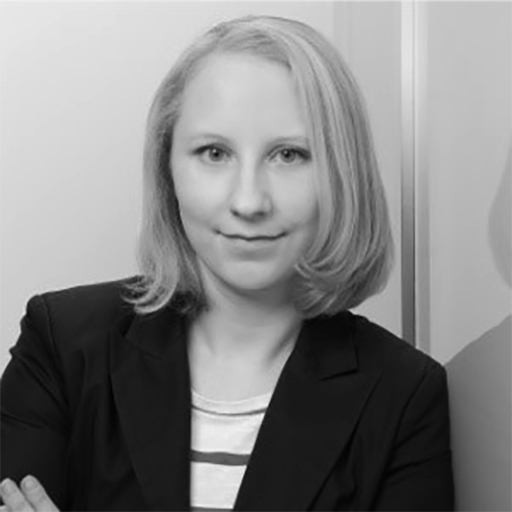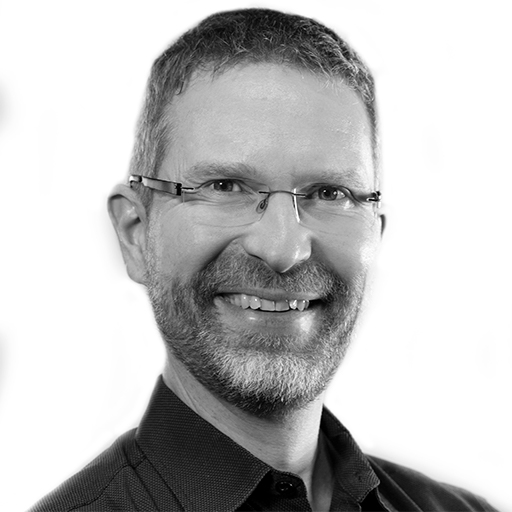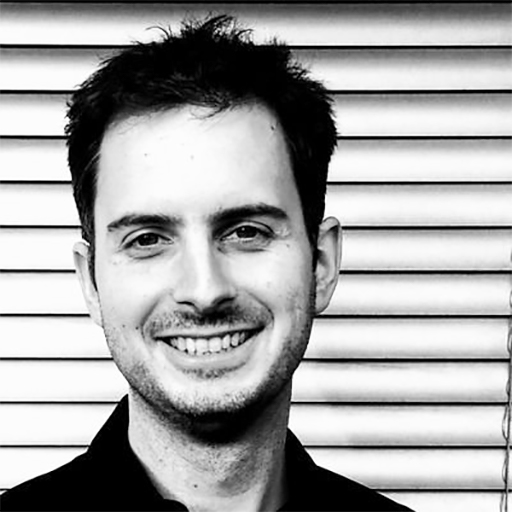
Konferenzprogramm

Die im Konferenzprogramm des GTD 2022 angegebenen Uhrzeiten entsprechen der Central European Time (CET).
Gerne können Sie die Konferenzprogramm auch mit Ihren Kolleg:innen und/oder über Social Media teilen.
Der Track+ besteht aus Präsentationen der Sponsoren und unterliegt somit nicht der Qualitätssicherung des Conference Boards.
Bitte beachten Sie, dass es für vereinzelte Workshops ggf. eine Teilnehmendenbeschränkung gibt. Weitere Infos hierzu finden Sie in den Workshop-Beschreibungen.
Konferenzprogramm 2022
Track: Inspiration
- Dienstag
03.05. - Mittwoch
04.05.
I believe in collaboration, in diversity, and in the whole team approach. However the fact that I believe in those values does not necessarily mean others believe them too. So, the question is 'How do I share my message successfully with the team?' After experiments, failures, and frustration I found my answer. It's ensemble testing in a cross-functional team. I want to share the story of our diverse ensemble testing team. How it changed our way of collaborating and testing and how it helped us to stay connected while working from home.
Target Audience: Everyone interested in collaboration or ensemble testing
Prerequisites: Curiosity
Level: Basic
Hi, I'm Andrea! A tester since 2011, what started unplanned by chance I now continue out of passion. Currently, I am a Software Quality Engineer in the maritime industry by day. And a reader, crafter, curious learner and RiskStorming Online advocate by night. You can find me on LinkedIn or Twitter.
The popular Dragons Out book about software testing is much liked. Schools have used the free supporting software testing presentation to organize a lesson or two to talk about software testing. I've interviewed children about how they learned software testing and what do they think about it. Now it is time to reveal the secrets of how children learn to test. There are also insights into how adults could learn in a much more effective and fun way. We'll talk about storytelling as a way to learn but also of hands-on practice and fun as an essential learning element. I'll also recap the Dragons Out book project.
Target Audience: Anyone interested in expanding the testing profession.
Prerequisites: No pre-requisites.
Level: Basic
Extended Abstract:
The popular Dragons Out book about software testing is much liked. It has been read in schools. Children have read it on their own after receiving the book from teachers or parents. Schools have used the free supporting software testing presentation to organize a lesson or two to talk about software testing. Especially coding and mathematics classes have been suitable for software testing learning.
I've been a guest lecturer in several classes at advanced schools. On those occasions, I've interviewed children about how they learned software testing and what do they think about it. Now it is time to reveal the secrets of how children learn to test. There are also insights into how adults could learn in a much more effective and fun way. We'll talk about storytelling as a way to learn but also of hands-on practice and fun as an essential learning element.
I'll also recap the book project briefly. I chose to write a book about software testing targeted to children to help in the great lack of software testing in the ICT business, the lack that just seems to be increasing. I also wanted to show people an alternative route into the exciting world of software. It is not only the coding that exists in the software world. The process took almost three years, but in that time I have founded a company for the book project, written the book in Finnish, had numerous pilot readers and review rounds, translated the book to English, found publishers for both Finnish and English editions, organized a crowd-funding campaign, gave many lectures at schools and conference speeches at event and fairs. The project culminated in associations and companies donating books to schools and a diploma of donations being handed to the Minister of Education. And finally, of course, I as the author getting the EuroSTAR Testing Excellence Award, which I feel is not only about my 25 years of dedication to the software testing community but especially this book for children initiative.
Mr. Kari Kakkonen is the 2021 EuroSTAR Testing Excellence Award winner. He is the author and CEO of Dragons Out Oy, creating a fantasy book to teach software testing to children. Kari Kakkonen is working in Finland at Knowit. He has M.Sc. in from Aalto University (aalto.fi). He works mostly with agile testing, lean, test automation, DevOps and AI.
Kari was on Executive of ISTQB (istqb.org) 2015-2021. He is on Board of Directors of TMMi. He is Treasurer of FiSTB (fistb.fi).
Kari is a singer, snowboarder, kayaker, husband and dad.
Navigation im Freien ist mittlerweile sehr gut abgedeckt. Aber wie schaut es Indoor, also z.B. in U-Bahnstationen aus. Ziel unseres R&D Projektes (Codewort: Mobi') war es herauszufinden, inwieweit man mit aktuell zur Verfügung stehenden Technologien, wie SmartGlasses, speziellen Indoor Navigationssystemen und Spracherkennung ein sprachgesteuertes Navi entwickeln kann, womit sich Blinde und sehbehinderte Personen(Persona: Gustav) mit modernster Technologie in U-Bahnstationen verlässlich führen lassen können.
Target Audience: Alle Interessierte die erfahren wollen, was uns die Zukunft an Unterstützung bringen kann
Prerequisites: Keine
Level: Basic
Extended Abstract:
Digitale Assistenten wie z.B. Smart Phones können und werden bei der Navigation im öffentlichen Raum ja bereits eingesetzt. Es zeigt sich allerdings, dass auch Smart Glasses zunehmend massentaugliche Technologie darstellen und im speziellen hinsichtlich Orientierung großartige Dienste, auch für EndkundInnen, leisten können.
Im ersten Anwendungsszenario (R&D Pilotprojekt) verwenden wir Smart Glasses für Sehende, Sehbehinderte und Blinde. Wichtige Informationen werden im Sichtfeld des Smart Glass Trägers eingeblendet. Dadurch werden die virtuelle und reale Welt auf einem Smart Glass Device zusammengeführt.
Mit Audio-Informationen und Head-up Informationen, also Informationen im Sichtfeld der NutzerInnen werden diese durch die U-Bahnstationen geleitet. Die Steuerung der Smart Glass erfolgt über Spracheingabe und/oder Touch Funktion.
So wird den NutzerInnen die aktuelle Position genannt und die verfügbaren Ziele und POIs zur Auswahl angeboten, wie z.B verfügbare Ausgänge, Cafes, Bänke, Notrufstellen usw. Blinde & sehbehinderte Personen werden über zusätzliche Audio-Kommentare zum gewünschten Ziel navigiert.
Hindernisse, wie Bänke oder Säulen, aber auch temporäre Warnschilder werden vom Smart Glass, via AI unterstützter Algorithmen, erkannt und über Audiofunktion an die NutzerInnen übermittelt. Die Datenbrille fungiert als virtueller Assistent für die Sehbehinderten U-Bahn NutzerInnen und gewährleistet mehr Bewegungsfreiheit, und erhöhte Sicherheit für die NutzerInnen im öffentlichen Verkehr.
Können wir in Kürze Menschen mit Sehbehinderung mehr Freiheit&Erleichterung bieten?
Während seiner langen Karriere hat Helmut auf zahlreichen Konferenzen Vorträge über Softwaretests gehalten. Er ist ein leidenschaftlicher Trainer und verantwortlich für das gesamte Schulungsprogramm bei Nagarro. Er ist Mitautor des Buches 'Agile Testing' und ein Veteran in der internationalen Tester Community. Aufgrund der immer größer werdenden Notwendigkeit, Präsenztrainings in Remote-Trainings umzuwandeln, führt Helmut häufig vertiefende Workshops zu kollaborativen Tools durch. Es macht ihm Spaß, seine Erfahrungen weiterzugeben, insbesondere in Bezug auf neue Technologien. Darüber hinaus ist er Präsident des Austrian Testing Boards (der ISTQB®-Vertreter Österreichs), das für Softwaretest-Zertifizierungen zuständig ist.
Documentation costs money and time. Still it is required in regulated industries and is needed to be able to maintain large scale software projects.Most projects are trapped in a world with a limited ability to e.g. maintain versions and baseline. It puts people in silos, requires handovers with cost and loss of information.Coming from waterfall, Siemens Healthineers identified documentation handling as major enabling for engineering efficiency. A process and tool change was initiated to introduce collaborative, seamless, actionable documentation.Follow me on the journey from first pilot to successful migration a project.
Target Audience: Testers, QA Engineers, Test Managers, Developers, Business/Product Owners
Prerequisites: None
Level: Advanced
Extended Abstract:
Nobody likes writing documentation. It costs money and time, it is boring, nobody knows when and how it is used. Still it is required in regulated industries. Software development documentation like requirements and test cases etc. is needed to be able to maintain large scale software projects.Most software projects are trapped in a documentation tooling with a limited ability to maintain versions, baseline, trace between dependencies and link between planning and documentation. Often documentation tooling is project phase specific (e.g. requirements management or test case design) and puts people in silos and requires handovers with cost and loss of information. Coming from waterfall, Siemens Healthineers identified software development documentation handling as major enabling for engineering efficiency in agile. A process and tool change was initiated to introduce collaborative, comprehensive, seamless, actionable, lightweight, controlled documentation that is always up-to-date with the software itself. Follow me on a journey from first pilot to successful migration in a whole project. Learn about culture change and return on invest. Celebrate with me the results, there is something in for everybody. Most benefits are for testers who get early and flexible design input. Testers can showcase the impact of any test results to requirements and release at a push of a button. Even the product can benefit from the ability to focus on value stream.
Andre Mainka is an ALM Solution Architect responsible for a large software stack supporting the whole toolchain from Requirements Engineering to Releasing Products at Siemens Healthineers.
He started his career as a software tester, became an integration manager, configuration manager and a product owner for the process tool infrastructure.
Andre has more than 15 years' experience in SW Testing, Development and supporting teams on their journey towards an agile culture.
His main topics are in the field of agile testing, getting people to work together and establishing quality in the whole software development and release cycle, always with the goal to develop customer value easier and faster.




